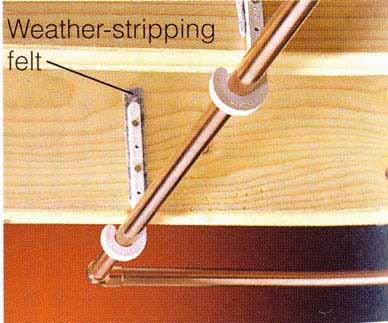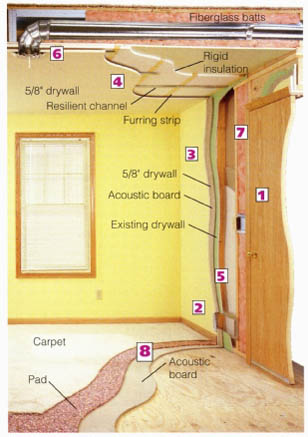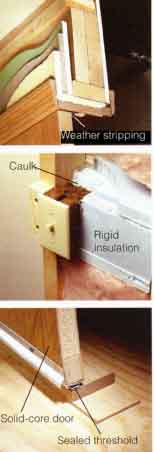Noise is a fact of life, but that doesn’t mean it has to disturb your work, play and sleep. There are steps you can take to minimize noise generated both inside and outside the home.
Since noise is simply airborne vibration, the best way to block it's to put something in its path. That something will block noise best if it has mass (like drywall or solid concrete), can isolate noise (like rubber gaskets or acoustic board) and is continuous (noise can sneak through even the smallest gap).
The photos on this page show a few ways you can dampen interior noises. To help block outside noise you can:
• Install high-quality storm windows with thick glass and good weather stripping.
• Add caps to chimneys.
• Add insulation to attics and walls.
• Seal up all holes and gaps around windows and doors and where pipes and wires enter your house.
The labeled illustration above and the detailed images below show the following:
1. Install a solid-core door with weather stripping and bottom sweep.
2. Caulk around duct work and electrical boxes.
3. Glue a layer of acoustic board, then another layer of dry wall to walls.
4. Secure furring strips, resilient channel and rigid insulation to the ceiling.
5. Glue acoustic board and drywall inside wall cavities while remodeling.
6. Surround ductwork with rigid foam and fiberglass insulation.
7. Install fiberglass batts in wall cavities while remodeling.
8. Install acoustic board, carpet pad and carpet on floors.
Other Noise-control Measures
Plumbing and heating systems are double trouble since they both create and distribute noise. Here are a few products to help quiet them:
Rubber boots (image below) on supply and cold-air return ducts will help isolate furnace vibration and limit noise from traveling along the ductwork.
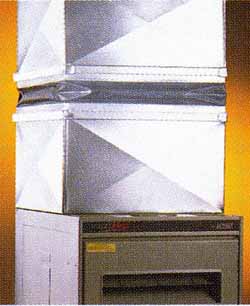
Vibration pads, (image below) available at heating and industrial supply stores, can help isolate noise generated by dishwashers, furnaces and washing machines.
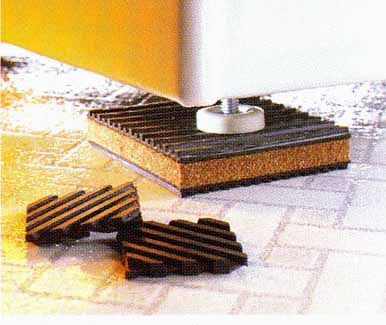
Pipe inserts (image below) installed in oversize holes, will help limit bangs, rattles and squeaks.
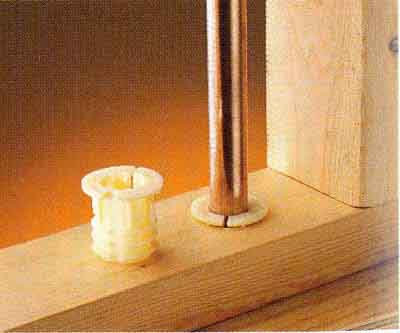
Pipe hangers, (image below) secured to joists with a strip of weather-stripping felt pinched between them, will isolate noise from both copper and PVC pipe.
